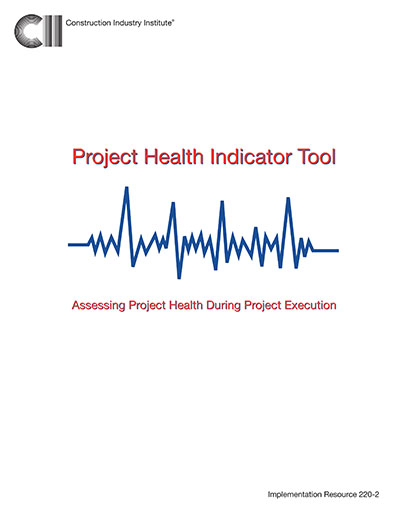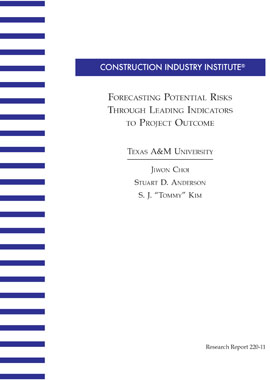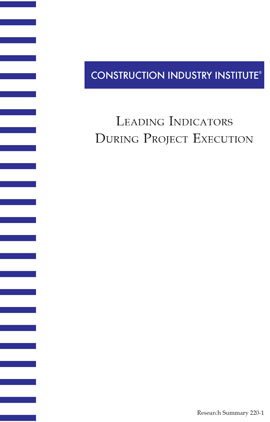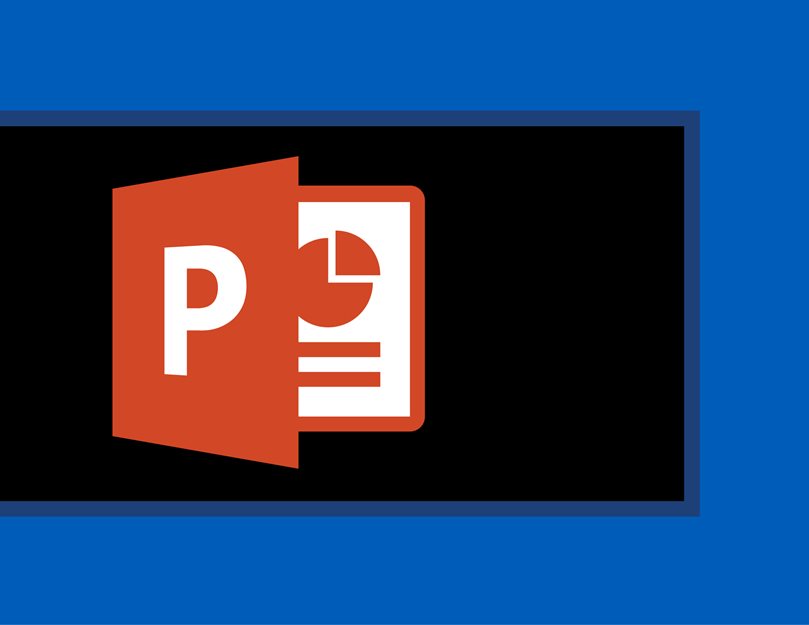
Project Health Indicator (PHI) Tool: Assessing Project Health during Project Execution
A project is developed through a cycle that includes front-end planning and project execution. Project execution includes detailed design, procurement of materials and equipment, construction, and startup. In the early project phases, typically during front-end planning, project management is focused on practices that have a substantial impact on changing project outcomes. As the project moves into execution, the ability to influence project outcomes diminishes and the emphasis then shifts to managing project work to ensure the desired project outcomes are achieved.
During project execution, the status of the project is periodically evaluated. Traditional methods or standard practices are used to evaluate project status. These methods typically have quantitative measures such as a performance ratio, schedule variance, and cost variance that provide hard data on a project’s current status and progress. Based on the evaluation of these measures, cost and schedule status are assessed.
Problem
Traditional methods and their measures may not adequately identify issues that may exist, such as lack of sufficient identification of warning signs of potential project failure, lack of a method for showing that a project is on the right track, and lack of connectors that can fill the gaps between these traditional measures and the degree to which the project is “on-the-right-track.” It may be that current methods lack the ability to provide real-time indications of emerging problems that impact project outcomes in a timely manner.
There are other non-traditional indicators that perhaps provide a clearer picture of how and where a project has gone off course. These leading indicators may have a significant impact on a project’s outcomes. Identifying and quantifying the impact of these leading indicators is the fundamental need being addressed by the Project Health Indicator (PHI) Tool. The use of PHI Tool can enhance the probability of project success.
In the PHI tool, 43 leading indicators provide real-time early warning signs of an unhealthy project. These leading indicators can complement current, traditional measurement approaches and provide additional insight into the health and vitality of a project. This can help ensure that the project meets the desired performance targets and adds value for all participants in the project development process.
The research identified 43 Leading Indicators, some of which are provided below: (IR220-2, p. 3, Table 1)
- The project team is lacking in the necessary expertise, experience, breadth, and depth to successfully execute the project.
- The project team is experiencing a high turnover rate and instability in team membership.
- The project team’s response to Requests for Information, questions, and changing events that can significantly impact the project results is slow, inadequate, or incomplete.
- The project team is losing confidence in the accuracy and validity of the schedule.
- Project milestones are not being met and are consequently jeopardizing future project milestones.
- Construction is awarded before adequate completion of project design, including discipline design packages, resulting in an incomplete scope definition at time of award/start of construction.
- Business goals, project objectives and priorities, and critical success factors are not being consistently used by project team members and key stakeholders to guide decisions.
- Owner and/or contractor are requesting an excessive number of contract changes and/or scope changes during project execution (detailed design, procurement, construction, and startup).
- Significant project scope items are inadvertently omitted from bid packages.
- Some project participant companies become financially unstable.
Each of the 43 Leading Indicators has a sheet that more fully describes the indicator and gives considerations for measurement. An example for Leading Indicator 18 is shown below.
From the surveys, RT-220 was able to statistically determine which Leading Indicators (LI) had the greatest impact on each of the five key project outcomes:
- Cost
- Schedule
- Quality/operability
- Safety
- Stakeholder satisfaction
The PHI is an Excel spreadsheet based tool and contains two outputs. The first output is the score that reflects the risk related to project outcomes, or a measure of project health. The second output is the correlation to project practices to help identify areas that should be improved to lower the risk of undesirable outcomes. The PHI tool is intended as a complement to traditional project controls and as an early warning system to identify problems earlier tan by traditional methods.



